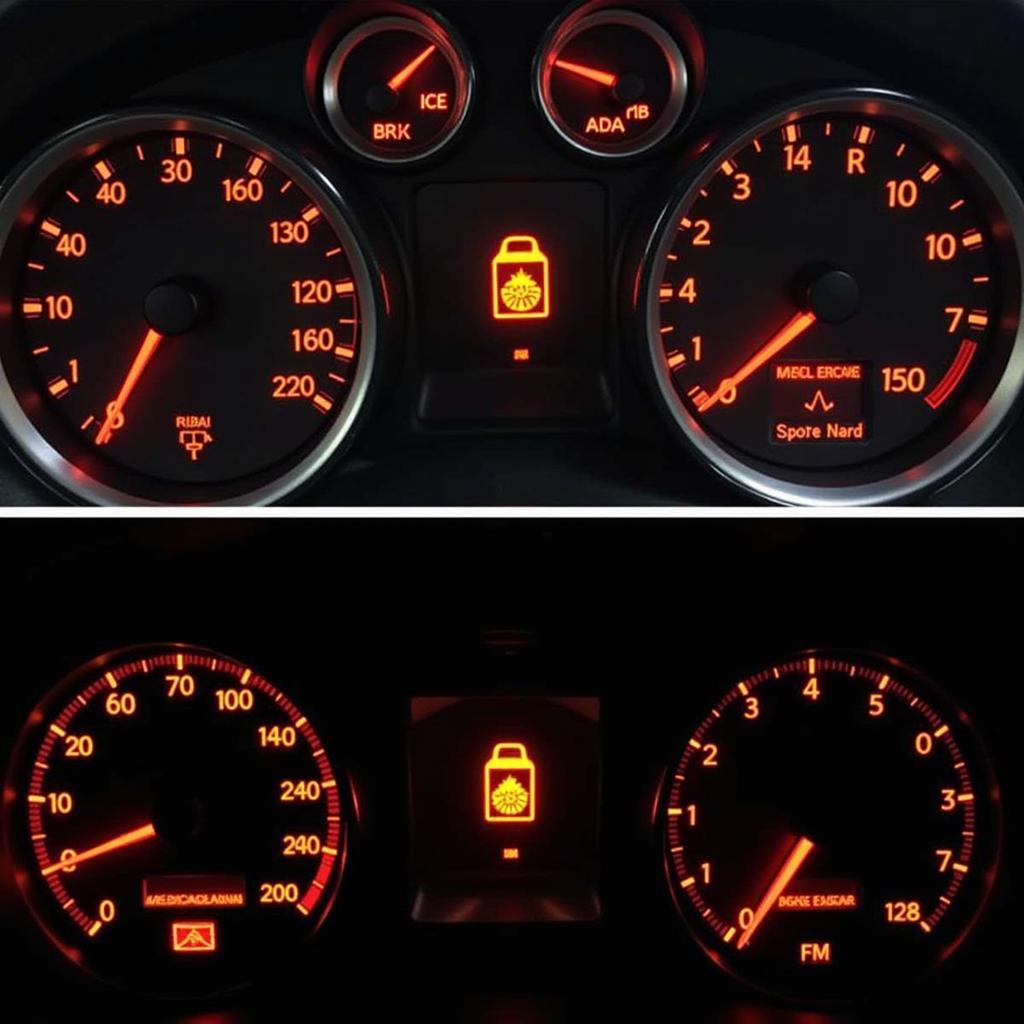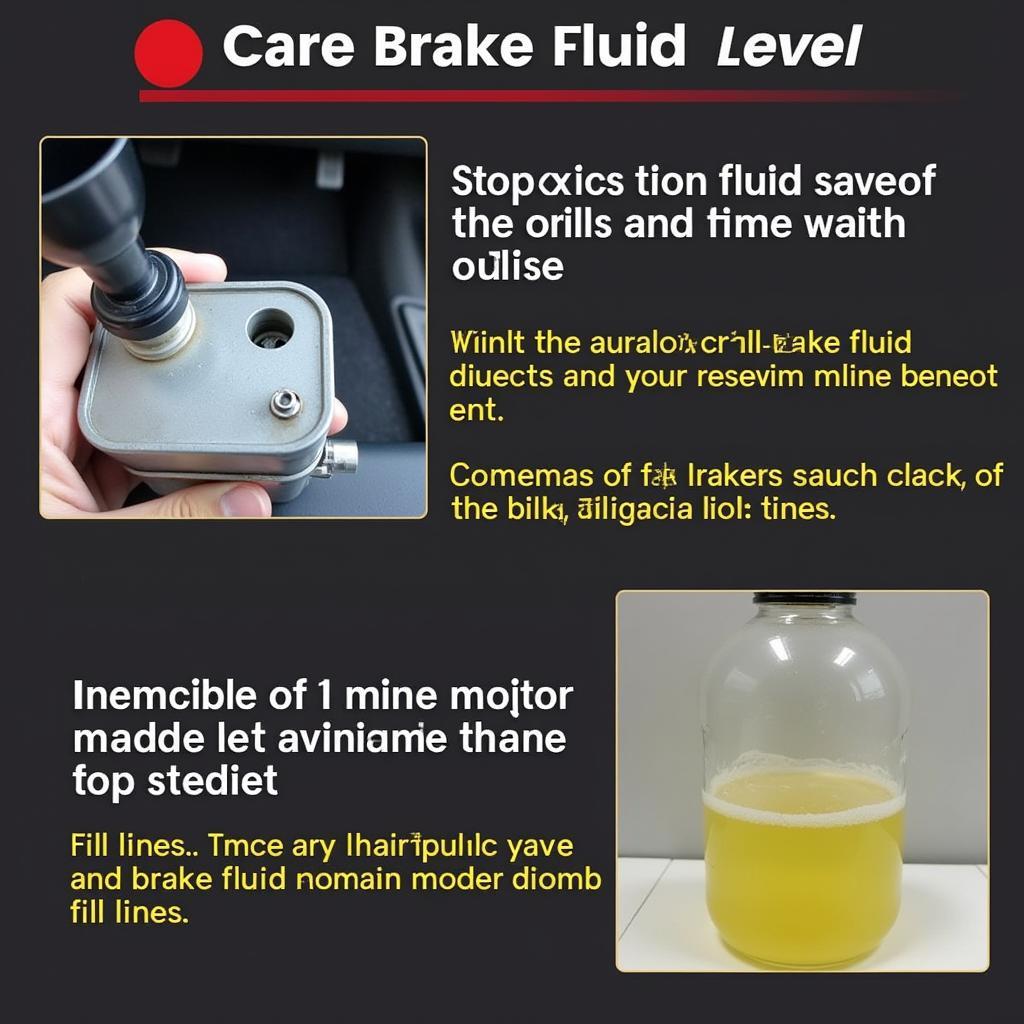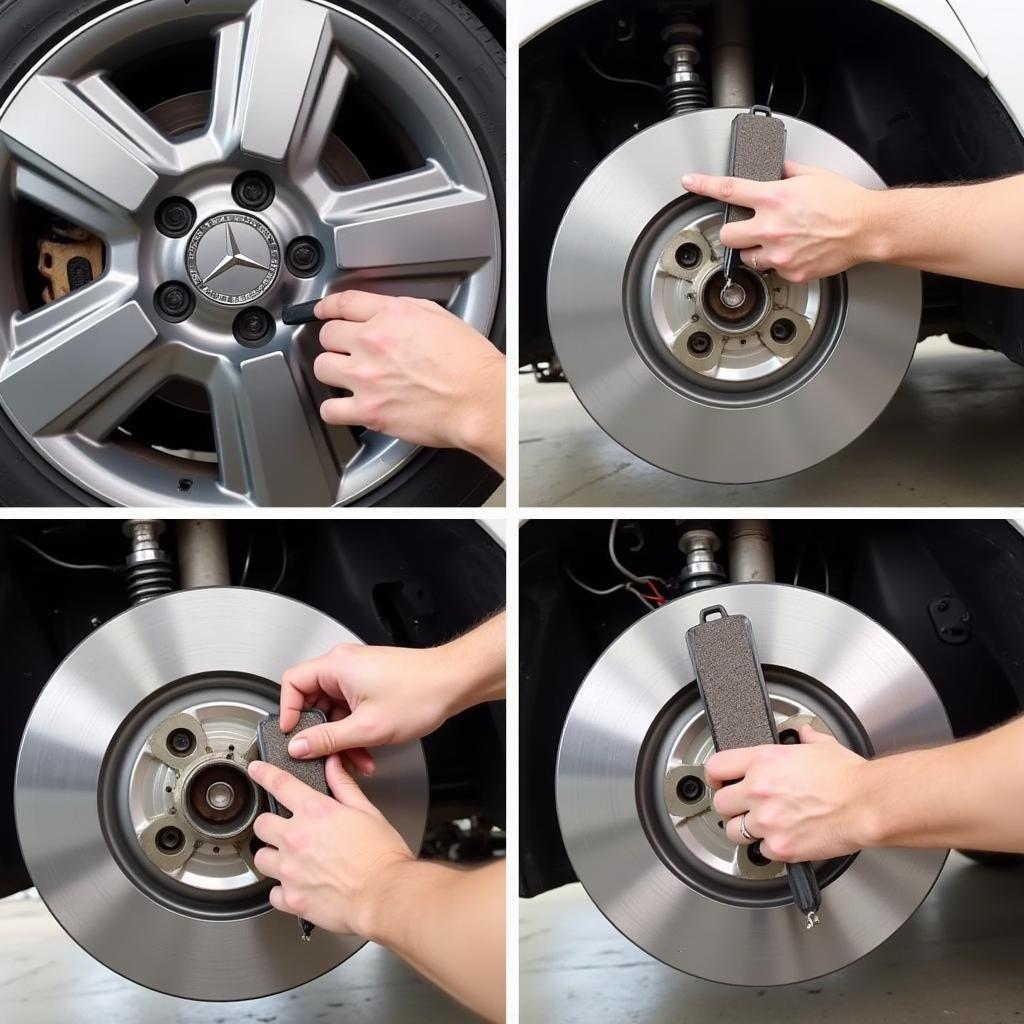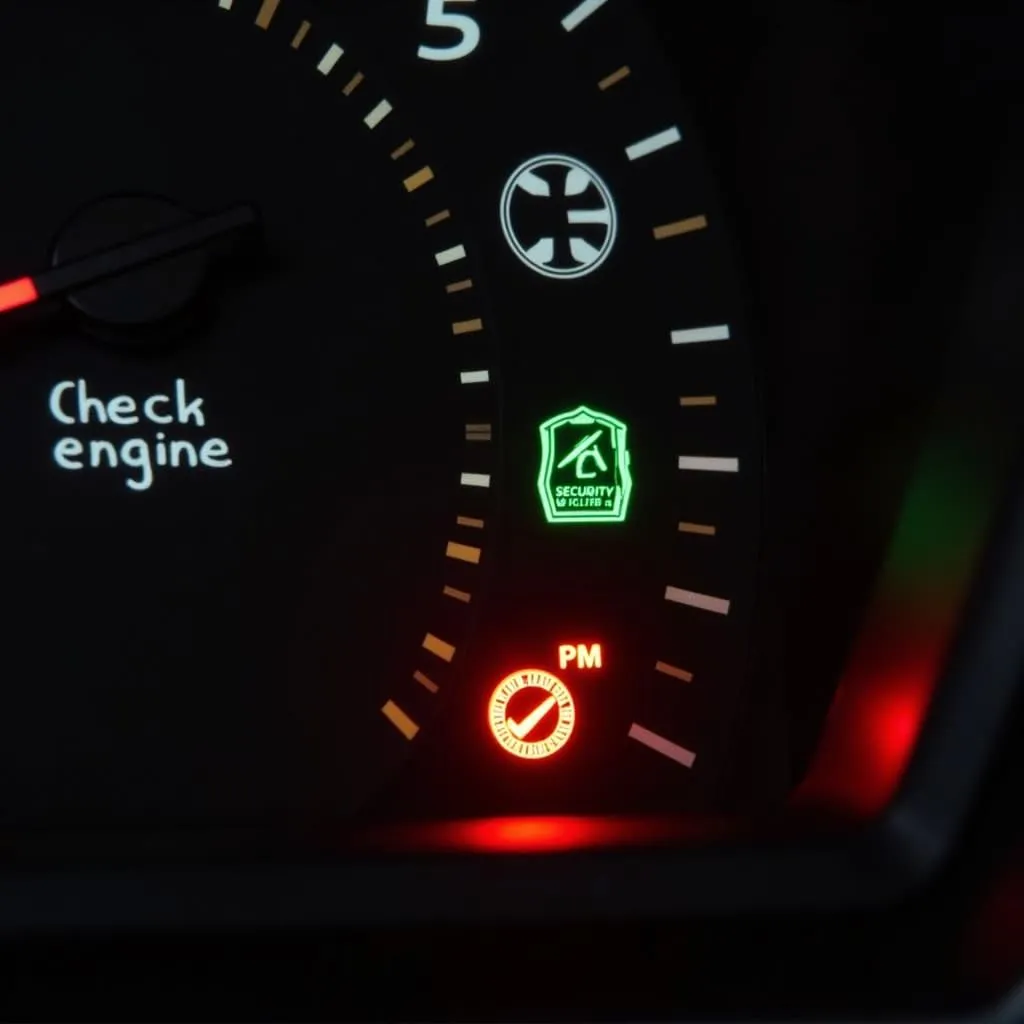The Mercedes brake sensor warning light is a crucial safety indicator. If illuminated, it signals a potential problem within your braking system, demanding immediate attention. This article will explore the common causes of this warning light, guide you through troubleshooting steps, and discuss available solutions, ranging from simple DIY fixes to more complex professional repairs.
What triggers the Mercedes brake sensor warning light? Several factors can activate this warning light, from low brake fluid levels to worn brake pads and even more complex issues like ABS module malfunctions. Understanding these potential causes is the first step toward effectively addressing the problem.
Decoding Your Mercedes Brake Sensor Warning Light
The brake sensor warning light can manifest in a few ways. It might be a persistent red or yellow light on your dashboard, or it might flash intermittently. The color and behavior of the light can provide clues about the underlying issue. For example, a steady red light often indicates a serious problem requiring immediate attention, such as critically low brake fluid. A flashing light, on the other hand, could point to a problem with the ABS system.
What should you do when this light appears? Ignoring it is never an option. At the very least, you should check your brake fluid level and inspect your brake pads. If you’re not comfortable performing these checks yourself, or if the problem persists after these initial checks, it’s crucial to seek professional assistance.
 Mercedes Brake Warning Light on Dashboard
Mercedes Brake Warning Light on Dashboard
Common Causes of a Mercedes Brake Sensor Warning Light
Several common culprits can trigger the brake sensor warning light in your Mercedes. These include:
- Low Brake Fluid: This is perhaps the most frequent cause. A leak in the brake lines or worn brake pads can lead to low fluid levels.
- Worn Brake Pads: As your brake pads wear down, the sensor embedded within them can trigger the warning light.
- Faulty Brake Sensor: The sensor itself can malfunction, sending a false signal.
- ABS Module Issues: Problems with the Anti-lock Braking System (ABS) module, such as a faulty wheel speed sensor, can also activate the warning light.
- Parking Brake Engaged: Sometimes, the warning light simply indicates that the parking brake is engaged.
It’s vital to pinpoint the exact cause to avoid unnecessary repairs. A systematic troubleshooting approach is essential.
 Checking Brake Fluid Level in a Mercedes
Checking Brake Fluid Level in a Mercedes
Troubleshooting the Brake Sensor Warning Light
Here’s a step-by-step guide to help you troubleshoot the brake sensor warning light:
- Check the Parking Brake: Ensure the parking brake is fully disengaged.
- Inspect Brake Fluid Level: Locate the brake fluid reservoir and check the fluid level. If it’s low, top it off with the correct brake fluid type specified in your owner’s manual.
- Visually Inspect Brake Pads: Look through the wheel spokes to visually assess the thickness of your brake pads. If they appear thin, they likely need replacement.
- Check for Leaks: Examine the brake lines and calipers for any signs of fluid leaks.
- Scan for Diagnostic Trouble Codes (DTCs): A professional diagnostic scan can pinpoint specific issues within the braking system, such as a faulty ABS sensor or module.
“Regular brake system checks are essential for maintaining safety and preventing unexpected failures,” advises John Smith, Senior Automotive Technician at German Auto Experts. “Don’t hesitate to seek professional help if you’re uncertain about any aspect of your brake system.”
2005 buick century brake warning light
Solutions and Repairs
Depending on the diagnosed problem, various solutions are available:
- Adding Brake Fluid: If the fluid is low, topping it off might resolve the issue. However, if the fluid level drops again quickly, it indicates a leak requiring further investigation.
- Replacing Brake Pads: Worn brake pads should be replaced promptly to ensure optimal braking performance and safety.
- Repairing or Replacing Brake Sensors: If a faulty sensor is detected, it needs to be repaired or replaced.
- Addressing ABS Module Issues: ABS module problems can be complex and often require professional diagnosis and repair.
“Investing in quality brake components and regular maintenance is far more cost-effective than dealing with the consequences of brake failure,” adds Maria Garcia, Lead Mechanic at EuroCar Specialists.
 Replacing Mercedes Brake Pads
Replacing Mercedes Brake Pads
Conclusion
The mercedes brake sensor warning light serves as a vital safety alert. Addressing this warning promptly is essential for maintaining the integrity of your braking system and ensuring your safety on the road. While some issues, like low brake fluid, can be easily rectified, others demand professional expertise. Never ignore this warning light, as it could indicate a serious problem that requires immediate attention. Regular maintenance and prompt attention to warning signs can prevent costly repairs and ensure safe and reliable braking performance.
FAQ
-
What does a flashing brake light mean? A flashing brake light often indicates a problem with the ABS system.
-
Can I drive with the brake warning light on? While you might be able to drive a short distance, it’s highly discouraged. The warning light indicates a potential problem that could compromise your braking ability.
-
How much does it cost to replace a brake sensor? The cost varies depending on the specific Mercedes model and the location of the sensor.
-
How often should I check my brake fluid? It’s recommended to check your brake fluid level at least once a month.
-
What type of brake fluid should I use in my Mercedes? Consult your owner’s manual for the specific type of brake fluid recommended for your model.
-
Can I replace my brake pads myself? While possible, it’s generally recommended to have brake pad replacement performed by a qualified mechanic.
-
What are the symptoms of a bad ABS module? Symptoms can include a flashing brake warning light, ABS light illumination, and a noticeable decrease in braking performance.

